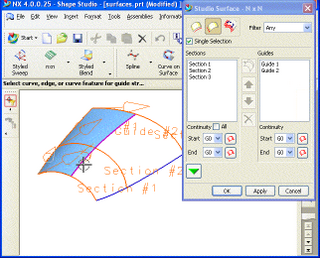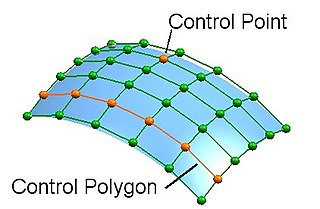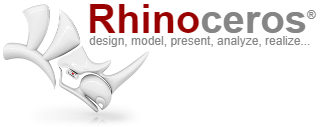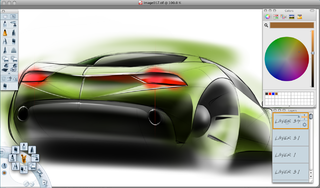This article is being considered for deletion in accordance with Wikipedia's deletion policy. Please share your thoughts on the matter at this article's entry on the Articles for deletion page. |
This article has multiple issues. Please help improve it or discuss these issues on the talk page . (Learn how and when to remove these template messages) (Learn how and when to remove this template message)
|
Autodesk Alias is a division of Autodesk which publishes software used in automotive styling [1] .
The software allows to create 2D sketches and rendering and it features the use of modern Cintique Tablets. This digital workflow opens an entire new world of image creation. Different to software like Photoshop, Alias allows the use of 3D package data (curves, solids, surfaces) to give the sketching process a real 3d dimension support. An interesting effect when using 3D package data comes up when the same design has to be drawn and presented in lots of different perspective views. The underlying 3D package helps to keep always the correct and realistic perspective view.
Apparently, even hand sketches that will be scanned can be imported into Alias. Based on this 2D input the user creates 3D curves which are the base for automatically creation of a network of NURBS surfaces. These surfaces can be decorated further with sketches to allow a fast and nice presentation of the design without time-consuming modeling of the details. Often it is enough to do early concept decisions to evaluate the model just with mappings of sketched details.
Design does not always just start with concept sketches on paper. Sometimes the designer starts right away with physical clay models. Sometimes the client wants to have a partial re-design of an existing model. In this case the physical models can be scanned and imported into Autodesk Alias Surface. The designer (stylist) cuts out the parts of the polygon model that have to be re-designed and filled it with his own NURBS surfaces. Using modern global shaping techniques he easily can change and balance the proportions of his model or just parts of it. Alias Surface allows with this an interesting Coexistence of 3D-Polygondata (typical scanner output) with sketched pixel data and with NURBS surfaces. This is called Hybrid Modeling.
In addition to this, a styling idea can be modeled even traditionally as a NURBS surface model. For this Alias offers the conventional modeling tools. These tools mostly based on curve based modeling philosophy. In here four-sided NURBS surfaces will be filled in an appropriate Network out of curves. This workflow matches mostly the common thinking and behavior of the majority of Car stylists, thinking in Feature lines. The high end discipline in surface modeling matches the quality level of Class A. This modeling effort needs advanced tools and different workflows as concept modeling.
In this discipline it is all about modeling of light and shadow. The highlights on surfaces are very sensitive and show every little misbalance and therefore the surfaces must be very nicely put together. For this special purpose the use of singe span NURBS geometry and its direct manipulation is preferred over the time by many automotive companies. This kind of modeling (curves as edges to manipulate the surfaces are not needed) is a good increasing of the traditional curve based modeling technology in Alias. On top of that Class A surfaces have to match special technology requests. For example, the radii have to have certain peaks and certain lead in. The design of shut lines requires special tools and diagnostics that are available in Alias too.
Especially when designing complexes of surfaces that include more than just one surface item (filet and flange) history-based tools allows the combination of several different commands in one tool. Such a tool creates the fillet flange in one step, or it creates a ball corner were three radii come together. These semi automatic tools are capable to save time during the entire NURBS modeling process, especially when doing technical surfaces like flanges and the mentioned ball corners.
With the development of Alias software line Autodesk puts a focus on automotive industry. Alias users take advantage from existing Autodesk technology and infrastructure.
The Alias software line supports industrial Designers focusing on capturing their ideas using a digital prototype. Requirement in here is to leave the creativity of the designer as most as possible untouched. Autodesk understands this process starting with the concept idea until leverage of a 3D prototype. Autodesk draws the line in automotive with leveraging Class A surface data to engineering/major CAD systems.
Autodesk will combine the virtual prototype with other 3D-unspecific information to make the prototype richer. With this, its appearance and meaning for design decision processes can be lifted to a new level.








